Blackberry bushes produce nutritious, tasty berries but they’re considered a noxious weed in some areas because of their ability to spread quickly and form dense thickets of thorny canes.
In this article I’ll share 7 ways to remove blackberry bushes from your garden.
This post contains affiliate links. Please read the disclosure for more info.

Blackberry seeds are easily spread by birds because of their sweet, juicy berries.
Blackberry bushes are commonly found along roadways, near orchards and in backyard gardens where they can become a real nuisance if they’re not kept under control.
Their dense thickets inhibit the growth of native plants, decrease forage for livestock and make mowing difficult.
Blackberry bushes can form large patches that can cover several acres of land over time if left unmanaged.
Blackberry bushes also produce an abundance of fruit that is attractive to animals and birds.
If left unchecked, your blackberry patch could become a haven for all kinds of wildlife.
The brambles are also dangerous to children and pets because of their sharp thorns.
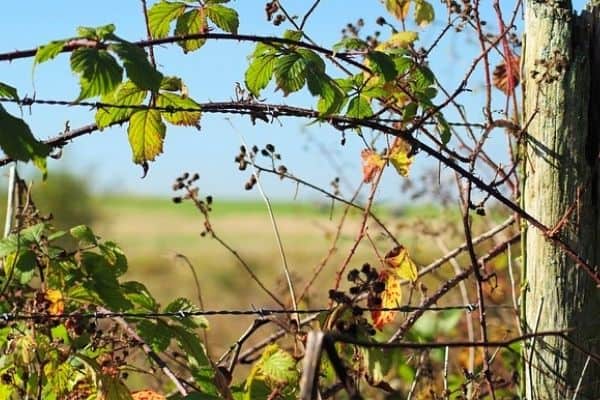
How to Remove Blackberry Bushes
The best way to remove blackberry bushes is to use a multi-faceted approach that ensures all parts of the plant are removed before the new growth has an opportunity to establish itself in your garden.
This will keep them from spreading and ensure the healthy growth of other plants in your garden.
There are several effective ways to remove blackberry bushes from your garden including digging, cutting, burning and using herbicides.
Each method has its advantages and disadvantages and you may need to try a couple of different methods to fully eradicate the blackberry bushes.
1. Cutting The Entire Bush
If you want to remove a small blackberry bush, one of the easiest ways is to cut down the entire plant with a pair of pruning shears or loppers.
This method works best for small individual patches of blackberries but it’s not very effective for removing large masses of thicket.
Cutting alone is often not enough to remove blackberries from your garden, which is why I recommend adding other methods of removal to the cutting process.
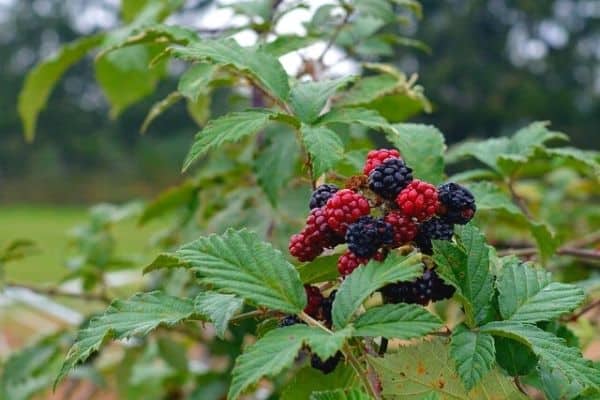
2. Pulling
Another method for removing blackberries is to dig up and pull the entire plant out of the ground.
This works best in areas where you have room to walk around and dig around the roots.
Pulling is very effective for small patches of plants and can be used to remove entire bushes over time.
If you’re removing blackberry bushes by hand remember that the plants are thorny and not easily removed.
You’ll need to wear thick gloves and long sleeves when pulling out blackberry bushes. [1]
3. Burning
The third way to remove blackberry bushes is to burn them down.
You can use a weed burner to clear away small patches of blackberry bushes.
A weed burner is a handheld device that is powerful enough to blast through thickets of blackberries and other thorny shrubs.
If you don’t have access to a weed burner, you can also light a fire to burn away blackberries.
Be sure to prepare the plot before you start burning by mowing tall grass and weeds in the area and removing anything that could be damaged by the fire.
4. Mowing
Large thickets of blackberry brambles can be mowed down to prevent and control spread.
Mow the bushes back to the ground, wait until spring and then mow again.
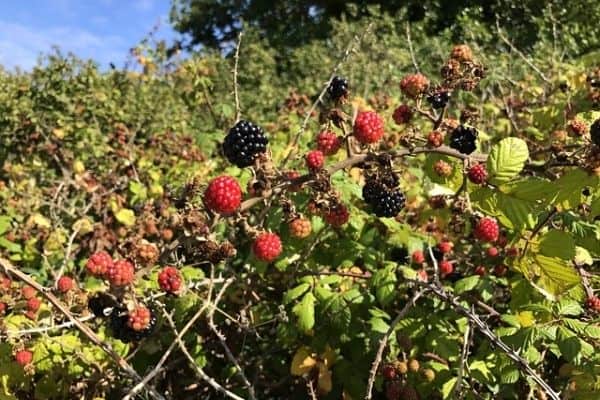
5. Herbicide
Brambles can be easily removed by spraying them with herbicide. You can do this yourself by hand or get a professional to do it.
The best time to spray blackberries is during the flowering or fruiting period.
It’s also a good idea to spray a few feet around the bush to remove any suckers.
Be sure to read and follow all the instructions on your herbicide label.
6. Covering them
Another way to get rid of small blackberry bushes is to cut them down and cover them with a large tarp or plastic sheet over the winter months to prevent new growth in spring.
As a bonus you’ll control other weeds that are growing in and around the blackberries.
When you remove the plastic covering you’ll need to dig around and remove any pieces of root that are left.
7. Goats
Goats are another way to get rid of blackberry bushes.
They will eat the entire plant so then all you need to do is look out for new growth and remove it.
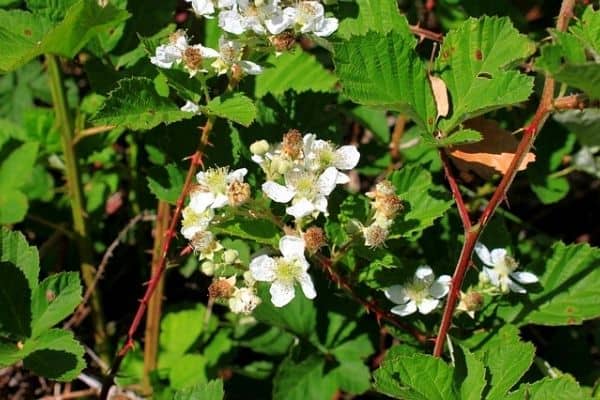
So there are my tips for removing problem blackberry bushes.
Managing wild blackberry bushes can be difficult because they are so resilient but by using one or more of the above methods you should be able to get them under control.
RELATED ARTICLES
Have you tried getting rid of blackberry bushes in your garden? Let me know in the comments below.
Are you on Pinterest? I have boards dedicated to Fruit Gardens and Gardening Tips that you may enjoy. You can also find me on Facebook.

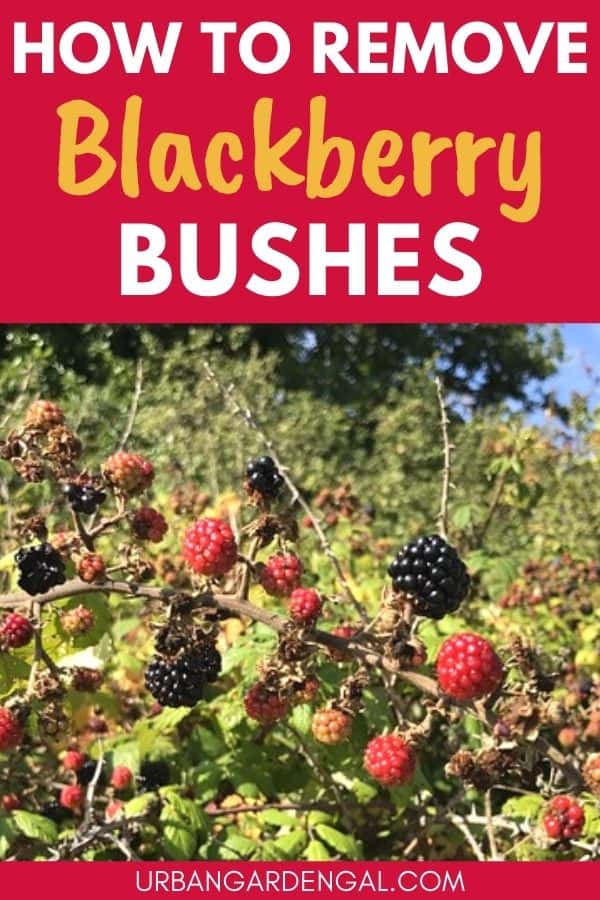




Great article. I used a brush cutter to bring a large bramble to the ground. Now I’m working on digging them up by the roots. Do you have any suggestions on what to do with all the canes left after cutting? Can you leave them in place to compost or should I rake them up for a burn pile?
Hi Christian, I would burn the canes rather than composting them so that they don’t start growing again.
a cheaper way to cut blackberries to the ground is to use a sword (yes sword). A rapier is probably the best but any long sword that keeps you out of range of the thorns will do. Also dig/pull when the ground is saturated as it is easier.
If you have plants you want to keep critters from walking up to them and eating them you can use piles of the cutoff canes as a natural fence around them. Again I keep the roots off the ground so they don’t propagate while the are fencing.